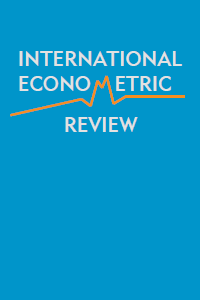An Out-of-sample Analysis of Mean-Variance Portfolios with Orthogonal GARCH Factors
An Out-of-sample Analysis of Mean-Variance Portfolios with Orthogonal GARCH Factors
In this paper a comparative study is conducted to evaluate the out-of-sample performance of mean-variance portfolios when three different variance models are considered. We use the common framework of orthogonal factors to specify the conditional covariance matrix structure. A key advantage of this approach is that the estimated factors can be modeled as univariate GARCH processes so that we can consider models for which multivariate extensions are not available. We, therefore, compared the Integrated GARCH (IGARCH) with the Exponential GARCH (EGARCH) and Fractionally Integrated Exponential GARCH (FIEGARCH) factor models on the basis of statistical diagnostics, and found the EGARCH model superior when fitted with heavy tailed distributions. We also evaluated out-of sample portfolio performances in terms of efficient frontiers, prediction intervals and turnover, and concluded that the EGARCH and FIEGARCH models provide comparable outcomes which are overall superior to the IGARCH performance. Looking jointly at statistical and economic criterions we conclude that fitting a FIEGARCH model with heavy tailed distributions can generally improve out-of-sample portfolio performances.
Keywords:
Mean-Variance Portfolios, GARCH Processes, Forecasting Turnover,
___
- Adcock, C.J. (2004). Estimating UK Factor Models Using The Multivariate Skew Normal Distribution. In Linear Factor Models in Finance, ed. S.E. Satchell and J. Knight. Butterworth Heinemann, Oxford and Burlington: 12-29.
- Alexander, C. (2001). A Primer on the Orthogonal GARCH Model. ICMA Centre Discussion Paper. Available at http://carolalexander.org/publish/download/DiscussionPapers.
- Best, M. and R. Grauer (1991). On the sensitivity of Mean-Variance Portfolios to changes in Asset Means: Some Analytical and Computational Results. Review of Financial Studies, 4: 315-342.
- Bystrom, H.N.E. (2004). Orthogonal GARCH and covariance matrix forecasting: The Nordic stock markets during the Asian financial crisis 1997-1998. European Journal of Finance, 10(1): 44-67.
- Bollerslev, T. (1986). Generalized Autoregressive Heteroskedasticity. Journal of Econome- trics, 31: 307-327.
- Bollerslev, T. and H.O. Mikkelsen (1996). Modeling and Pricing Long Memory in Stock Market Volatility. Journal of Econometrics, 73: 151-184.
- Chopra, V. and W. Ziemba (1993). The Effect of Errors in Means, Variances and Covariances on Optimal Portfolio Choice. Journal of Portfolio Management, 19(2): 6-11.
- Demos, A and D. Kyriakopoulou (2010). Bias Correction of ML and QML estimators in the EGARCH (1,1) Model. DEOS Working Papers, Athens University of Economics and Business.
- Franses, H. and D. Van Dijk (2000). Non linear time series models in empirical finance. Cambridge: Cambridge Univ. Press.
- Gerhard, F. and D. Hess (2003). Multivariate Market Risk Estimators: Reliability and Transaction Costs in the Context of Portfolio Selection. European Journal of Finance, 9(1): 1-18.
- Gourieroux, C. (1997). ARCH Models and Financial Applications. Berlin: Springer Verlag.
- Hawkes, R. and P. Date (2007). Medium-term horizon volatility forecasting: A comparative study. Applied Stochastic Models in Business and Industry, 23(6), 465-481.
- Longerstaey, J., and M. Spencer (1996). RiskMetrics-Technical document. New York: RiskMetrics Group, J.P.Morgan.
- Markowitz, H.M. (1952). Portfolio Selection. The Journal of Finance 7(1): 77–91.
- Mikosch, T. and C. Stărică (2003). Long range dependence effects and ARCH modeling. In Theory and applications of long-range dependence, ed. P. Doukhan, G. Oppenheim and M.S. Taqqu. Boston: Birkhäuser: 439-459.
- Nelson, D.B. (1991). Conditional Heteroskedasticity in Asset Returns: A New Approach. Econometrica, 59(2): 347-370.
- Zivot, E. and J. Wang (2006). Modeling Financial Time Series with S-PLUS, New York: Springer Verlag.
- ISSN: 1308-8793
- Başlangıç: 2009
- Yayıncı: Ekonometrik Araştırmalar Derneği
Sayıdaki Diğer Makaleler
An Out-of-sample Analysis of Mean-Variance Portfolios with Orthogonal GARCH Factors
WALS Estimation and Forecasting in Factor-based Dynamic Models with an Application to Armenia
Karen POGHOSYAN, Jan R. MAGNUS
A k-sample homogeneity test: the Harmonic Weighted Mass index
Jeroen HİNLOOPEN, Rien J.lm. WAGENVOORT, Charles Van MARREWİJK
